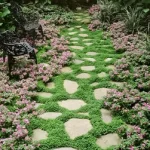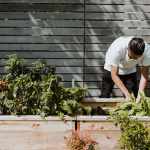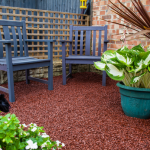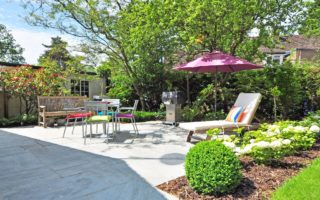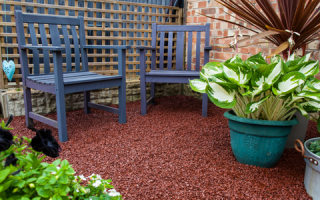At a loss with how to start landscaping your own garden without making it look like a third grader’s science project? We’ve got just what you need. Read on to see our tips on how to make your backyard just a tad more professional looking.
Table of Contents
Be Smart and Use a Tarp
Don’t be a hero – lifting garden debris can be quite heavy and tiring, quite literally. By using a tarp, you can more easily transport natural debris like weeds, grass trimmings, plant clippings, and fallen leaves. And if you’re giving your garden a makeover, twigs, stems, and branches can be even bulkier.
Tarps are also handy withholding soil when you’re digging a hole. It keeps the grass neat this way. It’s a nice, solid investment because you can also use it to cover the plants if you’re driving them home at the back of your truck from a nursery — or whenever you might be transporting seedlings.
Get Yourself Some Weed Fabric
Most DIY gardeners don’t use a lot of garden tools, thinking they’ll cost way too much. The truth is that these will not only make your jobs a lot easier and less straining on your body, you can also use them for a long, long time. Weed fabric, also called landscape fabric, is best used under mulch or gravel walkways.
This way, you can create a more aesthetic walkway without the material sinking into the soil. Make sure you don’t use the fabric in planted areas, though.
Interested about using mulch for your walkways? Then you’ll also need a good small gasoline wood chipper. Remember all the debris you hauled earlier using that tarp? Throw all of that into the chipper, collect the by-products, and you got yourself some homemade mulch. Now all that’s left is pouring the material strategically over key areas. Don’t forget to place a weed fabric down first.
Buy in Bulk
If you’re into gardening and can see yourself maintaining the area for a long period of time, then the smart way to go is to buy in bulk. This applies to the soil, stone, and even mulch (if you don’t prefer making your own – although that is quite wasteful). When you can dump the material on the spot where you’ll spread it, it’s wiser to use bulk material. This’ll save you time and energy of going back and forth to the store, as well as money.
Go for High-Quality Tools
As with any investment, you are better off with high-quality garden tools. Sure – they will cost more, but they are also going to be more efficient at the job they’re supposed to do. They won’t break easily and they will last for a longer period of time. Going for cheap tools might seem okay at first until they begin breaking while you’re in the middle of a job.
Leave the Leaves
Pun intended. Most homeowners tend to rake up fallen leaves and either dumps them in the trash or dispose of them in other ways. Don’t let the leaves end up in landfills. You can get so much use out of them! For instance, you can mow a bit of leaf into the lawn. This gives your ground a light dose of fertilizer, benefiting the grass and providing food for earthworms at the same time.
To collect the shredded leaves, use a bagging mower. You can use the ground-up leaves and add it to the mulch we talked about earlier. Alternatively, you can add this to your compost pile if you have one. You can till them into your veggie garden before seed planting season, too!
The same applies to grass clippings. Instead of dumping grass clippings, use them as mulch, compost, or fertilizer. This is proven to cut down your fertilizer needs by as much as 30%.
Avoid Going Back and Forth from the Garden Store
While it might be an enjoyable experience, we recommend buying enough supplies – tools, containers, seeds, fertilizers and such – in one go. Buying enough once can save you time, effort, and money of course.
To calculate how much soil (or mulch) you’ll need, first figure out the square footage of your garden area. Use this formula: width x length (for rectangular and square areas). Convert the cubic feet of the soil (or other material) to figure out how much coverage you’ll need if the area requires a specific depth (multiply the cubic feet by 4, giving you the square footage with 3 inches of coverage).
There you go – a few but really helpful pointers to avoid acting like a newbie and gardening virgin (even if you are!). We hope these tips will make you more confident with your backyard makeovers, and in turn, result in a more beautiful and well-put garden.


